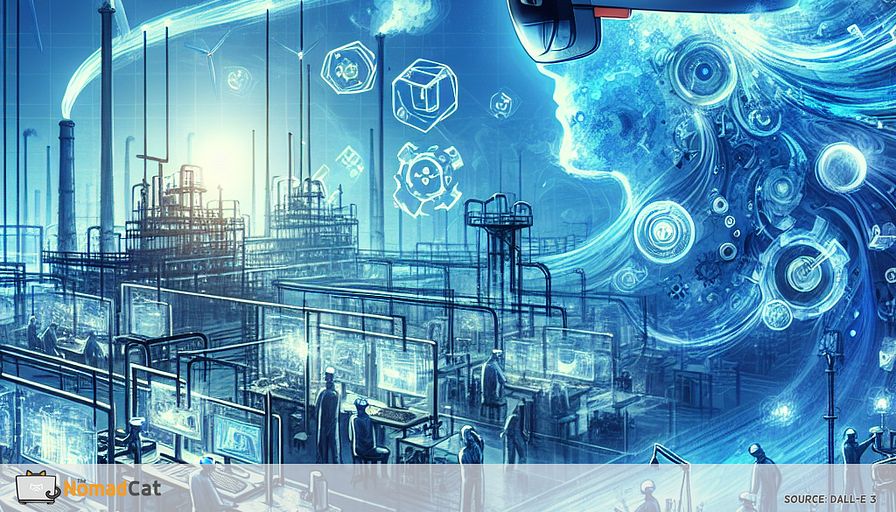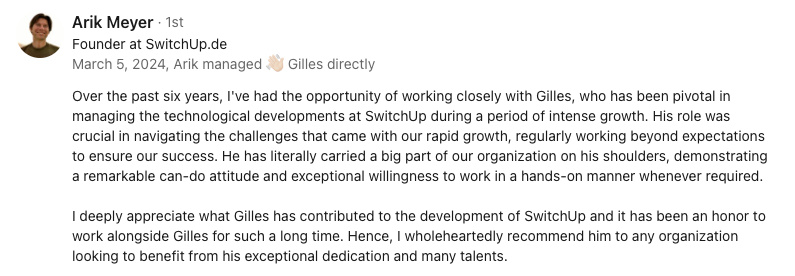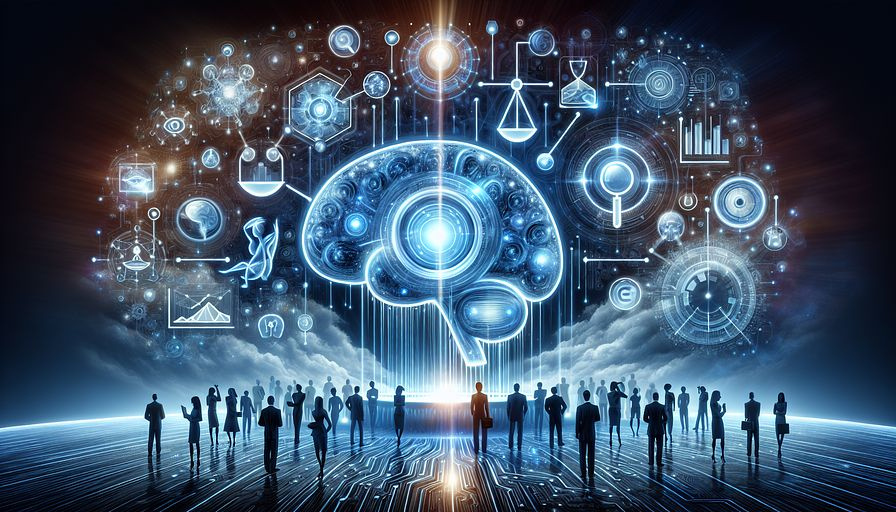Abstract:
The article explores the transformative impact of Mixed Reality (MR) in industrial automation, particularly in European manufacturing. MR, which merges virtual and augmented realities, enhances productivity, boosts innovation, and streamlines operations by enabling real-time interaction with digital content in physical environments. Its applications in manufacturing include process optimization, training, maintenance, and the creation of digital twins for predictive maintenance. European companies like Volkswagen and Thyssenkrupp exemplify successful MR integration, using it to improve assembly accuracy and reduce service times. The article also addresses challenges such as high initial costs, technical complexities, and employee resistance, suggesting phased implementation, strategic partnerships, and comprehensive training to facilitate MR adoption. As MR continues to evolve, it promises to drive efficiency and innovation, offering significant opportunities for startups and solidifying its role in the future of manufacturing.
Navigating the world of industrial automation can be daunting with the constant emergence of new technologies. One particularly exciting development is Mixed Reality (MR). Far from being a sci-fi concept, MR is a practical tool that blends virtual and augmented realities to revolutionize manufacturing processes. Imagine digital and physical worlds working in tandem to enhance productivity. This article explores how MR is transforming manufacturing, especially in Europe, by streamlining operations and inspiring innovation in product design. MR is indeed making a significant impact, so let's explore its role in the future of industrial automation.
The promise of mixed reality in industrial automation
Technology is advancing rapidly, significantly impacting industrial automation. MR is among the most innovative developments in this field, combining virtual and augmented reality to introduce new methods of innovation and efficiency in Europe and beyond. This section will cover the fundamentals of MR technology and its substantial potential in manufacturing.
Understanding mixed reality
MR represents a significant leap in how we interact with digital environments by merging the virtual with the real world. Unlike Virtual Reality (VR), which is entirely digital, or Augmented Reality (AR), which overlays digital elements on the real world, MR allows interaction with both simultaneously. In my experience, MR has effectively bridged the virtual and physical worlds in industries like manufacturing. This blended experience is particularly beneficial in areas where precision and real-time data are crucial.
Crafting immersive experiences: MR components
The magic of MR lies in its core components. Head-Mounted Displays (HMDs) such as Microsoft HoloLens enable users to view digital content directly in their line of sight. Sensors and cameras map spaces and track movements to ensure accurate alignment. Software like Unity facilitates the development of these experiences, enabling real-time interaction, which is vital in manufacturing.
Enhancing engagement and productivity
MR excels in creating interactive environments that enhance engagement and productivity. By allowing users to interact with digital content in real-world settings, MR helps maintain focus and efficiency. Imagine workers using a digital version of a machine right on the factory floor, receiving real-time feedback and guidance—this approach not only boosts productivity but also enhances safety and accuracy. MR is transforming industry operations, leading to more efficient outcomes.
Applications in manufacturing
Understanding MR's capabilities is beneficial, but witnessing it in action truly showcases its value. For instance, MR plays a significant role in process optimization by providing real-time data, enabling quick decision-making. By overlaying data on machinery, operators can swiftly identify and resolve issues, enhancing efficiency.
MR is also revolutionizing employee training and equipment maintenance. With MR, employees can practice on virtual machines, reducing errors and accelerating learning without halting production.
Another impressive application is digital twins, where MR aids in simulating operations and predicting maintenance needs. This leads to reduced downtime and improved efficiency. These applications demonstrate MR's advantages, paving the way for more benefits manufacturers can explore.
Strategic advantages for European manufacturers
Enhancing operational efficiency
Efficiency is crucial in manufacturing, and MR is instrumental in maintaining smooth operations. Real-time monitoring and instant data access with MR allow production lines to continue without interruptions. Consider sensors that monitor equipment performance and detect issues before they lead to costly downtimes. This capability enables quick adjustments to keep everything on track.
Reducing downtime is another benefit of MR through predictive maintenance and real-time diagnostics. By providing immediate data, manufacturers can anticipate machine failures and address them just in time, preventing problems. This proactive approach not only minimizes downtime but also extends equipment lifespan, boosting overall efficiency.
MR also aids specific tasks like quality checks and assembly. MR overlays can quickly identify defects, and MR-guided instructions make assembly faster and more precise.
Fostering innovation
Beyond enhancing efficiency, MR fosters innovation in product design and manufacturing. A significant advantage is rapid prototyping, allowing manufacturers to swiftly test new designs. MR enables designers to visualize and refine prototypes in 3D, accelerating the design-to-production cycle.
Several compelling examples in Europe highlight MR's capacity to develop new solutions. Volkswagen Group utilizes MR to improve training and assembly, reducing training durations and accelerating assembly processes. These examples illustrate how MR not only enhances processes but also fosters innovative manufacturing, maintaining Europe's competitive edge.
With these advantages, European manufacturers are poised to leverage MR for improved operations and innovation. As MR continues to evolve, its role in manufacturing holds promise for a future driven by efficiency and creativity.
European success stories in mixed reality
Revolutionary implementations
MR is not merely theoretical; it's actively utilized by leading European manufacturers to transform their operations. Volkswagen Group, a leader in automotive manufacturing, employs MR in training and assembly with Microsoft HoloLens. MR has significantly reduced training durations and improved assembly accuracy and speed. This strategic use of MR technology streamlines their processes and enhances their competitive advantage in the automotive industry.
Thyssenkrupp employs MR to revolutionize service diagnostics and maintenance. Their technicians use HoloLens to drastically reduce service times. This clever approach enables faster diagnostics and maintenance, improving service quality and minimizing downtime. These transformations highlight the tangible benefits MR technology offers, even in complex fields like industrial diagnostics.
Airbus and Siemens are also leveraging MR for intricate tasks and maintenance. MR enhances efficiency and quality assurance, allowing them to handle complex tasks with greater precision and speed, setting new standards in manufacturing. This demonstrates how MR supports not only efficiency but also long-term industrial innovation.
Pioneering strategies
Implementing MR technology comes with challenges, such as high initial costs and technical complexities. However, European manufacturers have navigated these obstacles through innovative strategies. Companies like Volkswagen and Thyssenkrupp have mitigated these issues by initiating small MR projects, demonstrating results before scaling up. This approach minimizes risk and builds confidence in MR's potential.
Partnerships and employee training are crucial for successful MR implementation. By collaborating with technology providers, manufacturers gain expert support, easing MR integration. Training programs ensure employees are prepared and motivated to use these new tools, reducing resistance and enhancing productivity. These efforts underscore the importance of collaboration to maximize MR's benefits in manufacturing.
By addressing financial and technical challenges with innovative strategies, these companies demonstrate how MR can be integrated into complex operations, paving the way for an advanced manufacturing future.
Technical and strategic implementation
Technical infrastructure
Implementing MR in manufacturing requires a robust technical foundation. Key components include reliable hardware like HMDs (Microsoft HoloLens), offering a broad view and precise tracking for seamless digital integration. These devices require powerful computers with robust GPUs and CPUs to handle complex graphics in real-time. Sensors and cameras assist with spatial mapping and interaction, essential for accurate digital overlays.
Equally important are the software platforms and network setups supporting MR. Platforms like Unity or Unreal Engine are popular for developing MR applications, providing tools for dynamic experiences. Integration with systems like ERP and MES ensures smooth data management, while fast connectivity via 5G or advanced Wi-Fi supports real-time collaboration. Edge computing further aids by processing data close to production sites, reducing delays. This network setup is crucial for effective MR deployment.
As MR usage expands, data security becomes paramount. Protecting sensitive information from breaches requires robust cybersecurity, including encryption and secure access. User authentication, such as biometric checks, ensures only authorized personnel access MR systems. Focusing on security is essential with the increasing complexity of digital systems in manufacturing.
Strategic considerations
Aligning MR projects with broader business goals is essential for strategic success. By integrating MR into existing systems, manufacturers can ensure that technological advancements support long-term objectives. This alignment facilitates smooth transitions and maximizes MR's impact, directly contributing to business success.
Workforce training and change management are vital for MR implementation. To overcome challenges, manufacturers should focus on:
- Comprehensive training to familiarize employees with MR devices
- Change management strategies to ease transitions and increase acceptance
- Involving staff early in MR projects to reduce resistance
- Continuous skill development to keep pace with technological advancements
By concentrating on these areas, companies can overcome integration challenges and fully leverage MR's transformative capabilities. Prioritizing training and embracing change management allows European manufacturers to harness MR technology for growth and innovation, keeping them at the forefront of industrial advancements.
Overcoming challenges and barriers in MR implementation
Common challenges
High initial costs and technical complexities are significant obstacles for manufacturers considering MR. Investing in MR requires substantial resources due to the advanced hardware and software involved. Complexity can complicate integration with existing systems, potentially increasing operational burdens. Beyond financial and technical hurdles, securing employee buy-in is crucial, as not all staff may be open to such changes. Recognizing these challenges is the first step toward a strategic MR integration.
Employee resistance and skill gaps also present barriers to MR adoption. Employees may be hesitant to embrace new systems, particularly if they lack familiarity or understanding of MR's benefits. Skill gaps can exacerbate this resistance, as inadequate training might lead to reluctance or errors. To successfully integrate MR, leaders need targeted strategies to bridge the knowledge gap and encourage acceptance.
Data security and environmental constraints are also critical when implementing MR. MR introduces new data vulnerabilities, necessitating robust cybersecurity to protect information. Manufacturing environments often present physical challenges like dust or heat that can affect MR hardware performance. Addressing these constraints is essential for reliable MR systems in industrial settings.
Solutions and strategies
To address MR integration challenges, manufacturers can adopt phased implementation and pilot projects. By starting small, businesses can demonstrate MR's return on investment, gradually building confidence and support. This approach reduces financial risks and allows for adjustments based on feedback, paving the way for broader adoption.
Comprehensive training programs and strategic partnerships help overcome skill gaps and technical hurdles. By investing in training, manufacturers can equip their workforce to handle MR technologies confidently. Collaborating with technology partners provides essential support, easing technical challenges and smoothing MR integration. With these strategies, manufacturers can harness MR's potential and prepare for future trends and opportunities in industrial innovation.
Future trends and opportunities
Emerging trends
Digital twins and simulation are becoming key in advancing predictive maintenance. By creating digital replicas of physical assets, manufacturers can monitor data and predict failures, improving efficiency and reducing downtimes. This trend is a cornerstone in predictive maintenance, allowing proactive problem-solving.
As digital twins grow, innovations in human-machine interfaces (HMIs) are rising, driven by MR. MR is changing HMIs by offering intuitive, hands-free interactions, boosting operator efficiency and safety. These advancements enhance the user experience and open new possibilities for automating complex tasks, setting the stage for advanced industrial applications.
Opportunities for startups
Startups have a unique opportunity to leverage MR to transform supply chain operations. By integrating MR into logistics and warehouse management, they can enhance accuracy and reduce costs, creating efficient supply chains. This MR evolution offers a competitive edge, helping startups streamline operations and quickly respond to market needs.
Strategic partnerships with established tech providers can accelerate MR innovation in manufacturing. Startups can access advanced MR platforms and insights, fostering collaboration that drives innovation. By aligning with industry leaders, startups can explore new growth avenues, strengthening their position in the fast-changing industrial sector. These collaborations pave the way for further advancements, ensuring MR continues to shape manufacturing's future.
The integration of Mixed Reality (MR) in industrial automation is more than just a technological upgrade; it's a step toward efficiency and innovation in manufacturing. With MR, manufacturers can blend digital and physical worlds, improving productivity, reducing downtime, and enhancing training. Companies like Volkswagen and Thyssenkrupp are already experiencing the benefits, setting an example for others. By addressing challenges through strategic planning and training, the shift to MR can be smooth and rewarding. This change promises a future where manufacturing is more responsive and innovative.
You might be interested by these articles:
- Enhancing Remote Collaboration with AR
- Blending Realities for Enhanced Workflows
- Revolutionizing Workplaces with Mixed Reality





